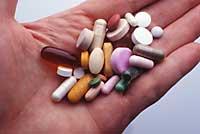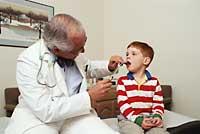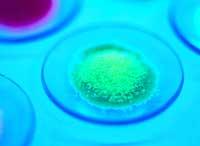New option for antibiotics

Only when antibiotics are needed, doctors want the bacteria not to be resistant. If bacteria develop resistance, it is over. The medicine is useless and you have to look for another formula! Resistance is a serious problem in current medicine. However, it seems that it is in the process of solution.
In fact, at the University of Illinois they have discovered a molecule capable of removing the part of DNA that makes bacteria resistant. Therefore, with the use of the molecule, the bacterium loses its protection against the drug and the drug recovers its effectiveness.
Bacteria achieve resistance through different mechanisms. They sometimes mutate the destination of the drug, so the drug has nowhere to tie or stick it and loses effectiveness. At other times, the bacteria produce a gene that neutralizes the drug.
Resistant genes work outside the bacterial genome. This group of genes is concentrated in a spiral called plasmid, and plasmid is easily transmitted from one bacteria to another. In addition, the resistance that the plasmid provides is not exclusive to the drug, but the bacteria that contain it become resistant to other medicines like this.
Molecule that eliminates resistance

Therefore, if this plasmid is eliminated, the bacterium is retrospectively sensitive to the drug and the drug has no problem for its work or to cure the disease. This is what researchers have looked for and ultimately achieved hopeful results at the University of Illinois.
Researchers have used a molecule to remove plasmid from bacteria. The molecule is called apramycin and acts on plasmid replication. This makes the plasmid a stranger to the bacteria and the bacteria do not accept it and expel it. The bacteria are then unprotected from the medicine and the medicine is effective.
As often happens, here is a "but": the apramycin molecule is quite toxic and cannot be used in medicine. However, research is very useful, as researchers have discovered the mechanism of elimination of plasmid and now know where to continue.
Retrospective

While researchers find the right molecule, patients should continue to take antibiotics responsibly, otherwise more resistance will be generated. In part, the problem is due to inadequate use of antibiotics.
The best known antibiotic is penicillin. Penicilium derives from the notatum fungus and was randomly discovered by Flemming in 1928. This discovery has become almost a myth. There are many stories that are told, but the truth is that this antibiotic that Fleming discovered and learned to use others for decades saved many lives. Penicillin was the cause of the invasion of previously incurable and deadly diseases (gonococia, meningitis...).
How to avoid resistance generation
However, bacteria that eventually completely destroyed penicillins have become resistant. Therefore, penicillin is not as effective. The same has happened with many other antibiotics. Why?

Sometimes by taking antibiotics when they are not needed, for example to cure diseases caused by viruses, self-medication... Other times, when symptoms go away, the antibiotic is stopped, but there are still bacteria and they are given the possibility to resist if before treatment the antibiotic is stopped. In hospitals, on the contrary, resistance to the continuous contact of bacteria with medicines is generated, eventually becoming resistant.
To avoid them, doctors advise, among other things, to take antibiotics as prescribed and not self-medicate. In addition, antibiotics cannot be bought without a prescription at the pharmacy and special measures against bacteria are also taken in hospitals. On the other hand, strict controls are made to prevent the remains of antibiotics used in animals reach the human being through food. To see if with all these measures and with the new discoveries is put in way of solving the problem of the resistances.
Published in 7K.
Buletina
Bidali zure helbide elektronikoa eta jaso asteroko buletina zure sarrera-ontzian











